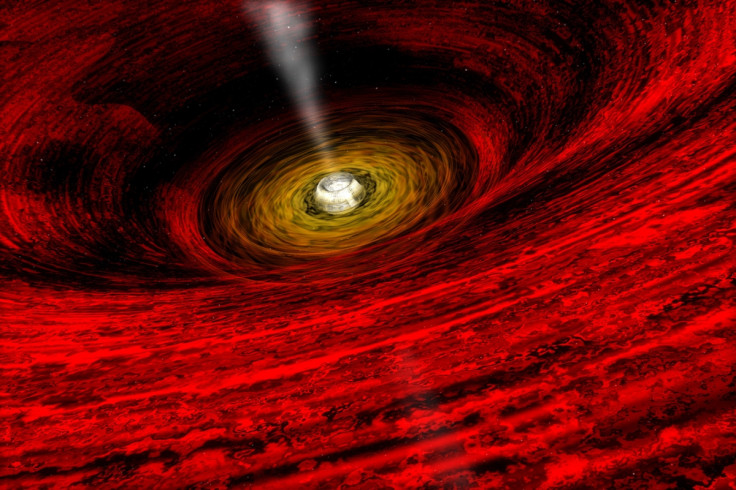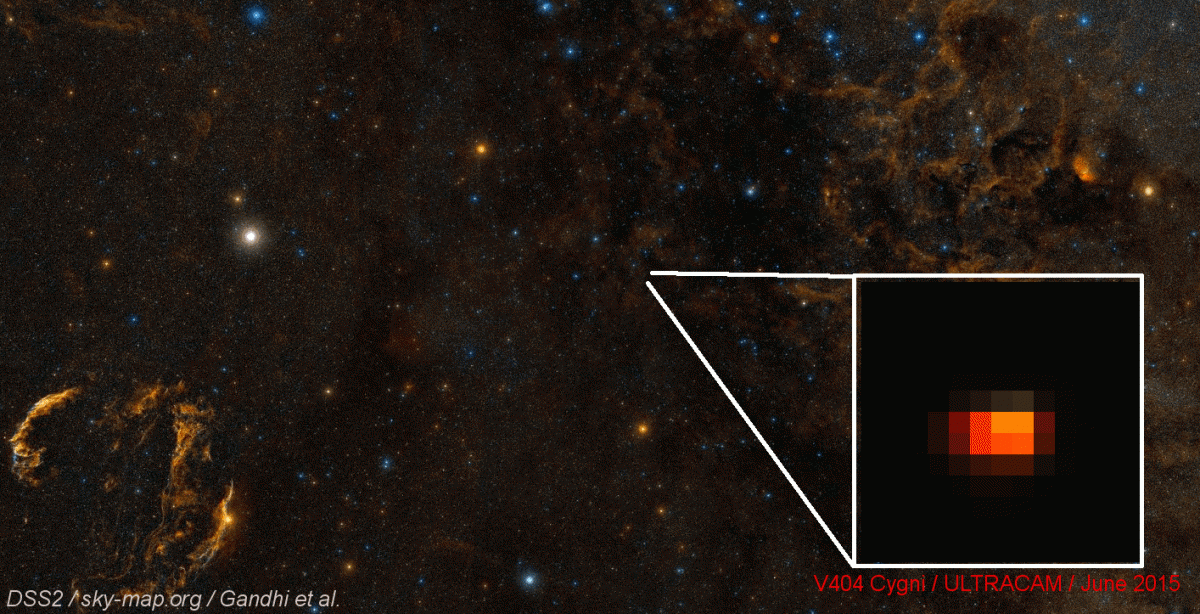Black hole feeding frenzy observed through violent red flashes 1,000 times more powerful than Sun

A black hole has violently flashed red with the power of 1,000 suns, say researchers from the University of Southampton. The red outbursts are signs that the black hole was ejecting pieces of a star that it was devouring.
The research published in the journal Monthly Notices of the Royal Astronomical Society, describes the intense red outbursts from the black hole V404 Cygni – the first black hole to be discovered in our galaxy. The void is about 7,800 light years away from Earth.
Scientists observed the red flashes lasting fractions of a second – some as little as 24 milliseconds - by using a fast imaging camera, known as ULTRACAM, on the William Herschel Telescope, based on the Canary Islands. They observed the outbursts for around two weeks in June 2015.

"The very high speed tells us that the region where this red light is being emitted must be very compact," said Poshak Gandi, lead author of the research. "Piecing together clues about the colour, speed, and the power of these flashes, we conclude that this light is being emitted from the base of the black hole jet. The origin of these jets is still unknown, although strong magnetic fields are suspected to play a role."
'It reacted violently by spewing out some of the material as a fast-moving jet'
The astronomers believe the blinding flashes are related to V404 Cygni's companion orbiting star. The black hole was consuming the star at the time of the observations.
"These red flashes were found to be strongest at the peak of the black hole's feeding frenzy," said Gandi. "We speculate that when the black hole was being rapidly force-fed by its companion orbiting star, it reacted violently by spewing out some of the material as a fast-moving jet. The duration of these flashing episodes could be related to the switching on and off of the jet, seen for the first time in detail."
Gandi suggests that the black hole devoured the star too quickly for its own good, similar to when a human throws up after eating too quickly. This released a huge amount of energy, seen on Earth as red flashes.
Collaborative effort to research black hole outbursts
This is not the first time V404 Cygni belched in a similar way; the last time was in 1989. However, this was one of the brightest outbursts in recent years, and provided astronomers with a good opportunity to study it.
"The 2015 event has greatly motivated astronomers to coordinate worldwide efforts to observe future outbursts," said Gandi. "Their short durations, and strong emissions across the entire electromagnetic spectrum, require close communication, sharing of data, and collaborative efforts amongst astronomers."
© Copyright IBTimes 2025. All rights reserved.





















